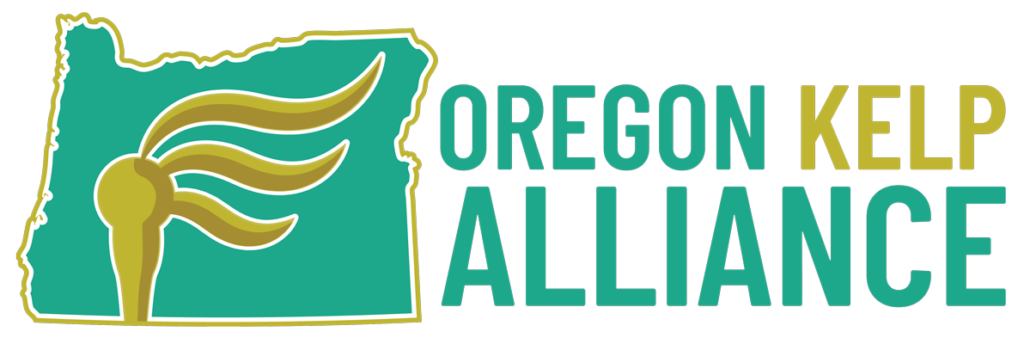Saving
The
Ocean's
Forests
Kelp forests provide critical habitat for marine life, sequester carbon, and are deeply connected to Oregon's coastal communities. And, we're losing them.
On Oregon’s southern coast, far away from the Pacific Northwest’s booming metropolitan areas, the Oregon Kelp Alliance is working to solve a local environmental problem that has implications up and down the west coast and across the planet. Portions of bull kelp forests in California, Oregon, Washington, and British Columbia are declining at alarming rates. And the effects could be felt all the way from the ocean to your dinner plate. If you care about outdoor recreation and the northwest's coastal economies, kelp forests need your help.
Hear Tom reflect on the loss of kelp in Nellies Cove:
The southern coast is a world away from the crowded central and northern coastal regions. The sun shines and winds whip against rock formations scattered along the shoreline. The Redfish Rocks Marine Reserve and Protected Area guard a complex reef and provide habitat for a diversity of fish, invertebrates, and seaweeds. Recreation options are nearly endless with opportunities to kayak, scuba dive, hike, bike, and fish in some of Oregon’s most spectacular wilderness.

The town of Port Orford, Oregon is nestled between Bandon and the mouth of the Rogue River. This unassuming fishing community of roughly 1,200 full-time residents is a dream destination for adventure seekers on both land and sea. It’s a place where commercial fishermen, recreation, tourism, and local citizens work together to support science. Port Orford is also basecamp for the Oregon Kelp Alliance (ORKA).
ORKA is a diverse group of scientists, natural resource managers, tribal members, tour guides, and chefs, all working to support healthy kelp forests.
In 2019, a California study documented a severe decline in bull kelp in northern California. The southern Oregon coast shares many ecological characteristics with northern California. Evidence is mounting that Oregon may be seeing the early stages of a similar collapse.
Through ORKA and its partners, an innovative plan is underway to protect and restore targeted areas of Oregon’s kelp forests. By harnessing science, recreation, tourism, and new economic opportunities for coastal communities, ORKA’s plan lays the early foundation to understand and possibly mitigate a potential kelp collapse.
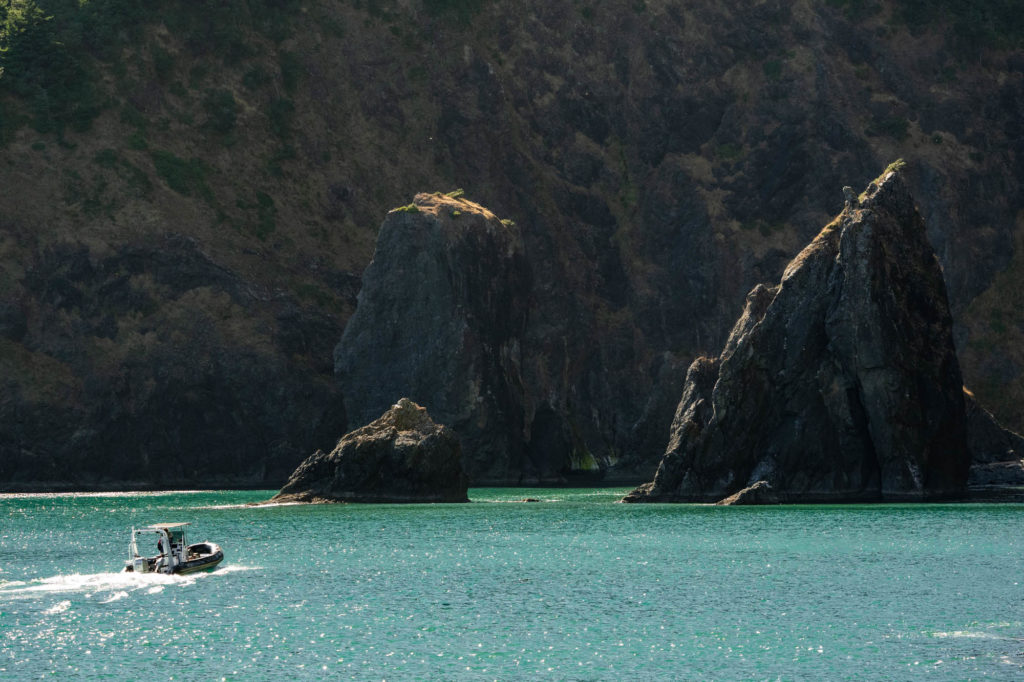
For many visitors and residents, bull kelp is a regular part of the coastal experience. Piles of kelp congregate on sandy shores while the kelp’s canopy engulfs long stretches of ocean close to shore. Such was the case in Port Orford until 2017 when urchin divers, sport divers, and scientists began to see a decline in kelp near Orford Reef and nearby Nellies Cove.
Bull kelp is a foundation species, meaning that it helps create the foundation of a larger ecosystem. Like trees in a forest, kelp provides important habitat for marine life, introduces nutrients back into the water, and sequesters carbon.
Healthy kelp forests, like this one south of Depoe Bay are home to food sources for large marine mammals such as gray whales.
“Kelp forests are so cool! They have so many connections to not just the health and ecosystem of the critters within them, but to ecosystems all around them. At the most basic level, they are what we call foundation species, or engineer species. I call them the ‘if you build it, they will come species.’ Basically, they form habitat. Like trees or coral reefs. Out in the ocean, there isn’t a lot of 3D structure. So when you get that 3D structure, zooplankton want to come and hide from predators. Then a fish will come to find the zooplankton. And then seals will come to eat the fish. It kind of cascades up the trophic chain. They’re an important habitat, particularly for juvenile fishes. Particularly Rockfish and Salmon.”
Dr. Sara Hamilton
Ph.D., ORKA Scientific Coordinator
In Oregon’s cold nutrient-rich waters, kelp forests thrive and grow quickly. Bull kelp (Nereocystis luetkeana) can grow as fast as a foot or two a day, reaching up to 100 ft each season. But rising ocean temperatures, human and natural changes threaten kelp’s ability to consistently return and provide important habitat for marine animals.
Without healthy and thriving kelp forests, marine life seeks habitat elsewhere, which impacts commercial and recreational fishing, and tourism. As fishing opportunities continue to dwindle, tourism and economic impacts will increase. Beyond economics, the kelp decline is an environmental indicator of climate change.
A crab clings to a piece of kelp. (Video: N De Garmo)
“Humans and other natural things are hitting kelp from many different directions. One of the biggest things is climate change. Climate change is not good for kelps because they like cold, nutrient-rich water. Usually, warm water is nutrient-poor. It’s usually warm and clear and good for swimming, but that means that there aren’t a lot of nutrients in it. Kelp like murky phytoplankton-filled, nutrient-rich, cold water because that’s what they use to make their bodies. They don’t have soil like a plant does, they just use what’s in the water. They not only like the nutrients in the water, they like the cold. So when you have instances of marine heatwaves, where these big warm blankets of water that hang out on the shoreline, it not only kills the kelp by making it too hot to live, it kills them by starving them.“
Dr. Sarah Gravem
Ph.D., Marine Community Ecologist, Oregon State University Research Associate, Partnership for Interdisciplinary Studies of Coastal Oceans (PISCO) Program. ORKA member.
Nellies Cove, just outside of the Port of Port Orford, was once full of a thriving kelp forest. Today, a small patch of kelp remains. Beneath the water’s surface, where a thriving ecosystem once existed, purple sea urchins now blanket the ocean floor in what is known as an urchin barren.
Slide to see the kelp decline that's happened in the last four years.
URCHINS EAT KELP, AND THEY ARE VORACIOUS
Purple urchins are smaller than red urchins, which historically supplied uni, or urchin roe, to restaurants and seafood markets around the world. The disappearance of natural predators in Oregon combined with several years of purple urchins reproducing at higher rates has paved the way for urchins to decimate certain areas of kelp forests in Port Orford and elsewhere on the Oregon coast.
A recent survey at Orford Reef conducted by Oregon’s Department of Fish and Wildlife, with the help of local commercial urchin divers, reported approximately 350 million purple sea urchins – a more than 10,000-fold increase since 2014.
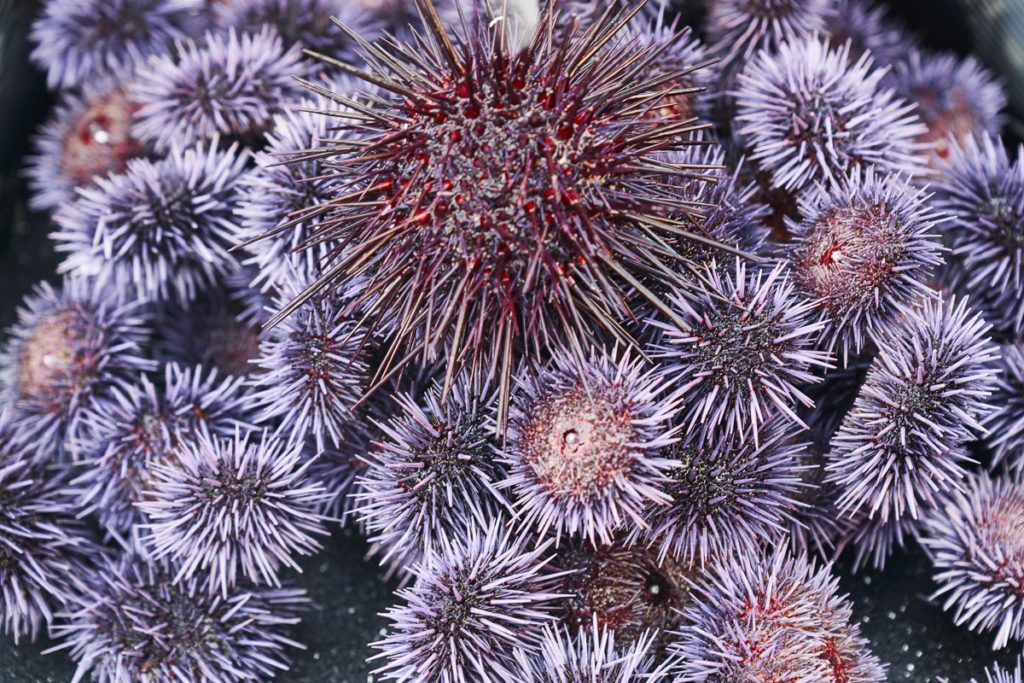
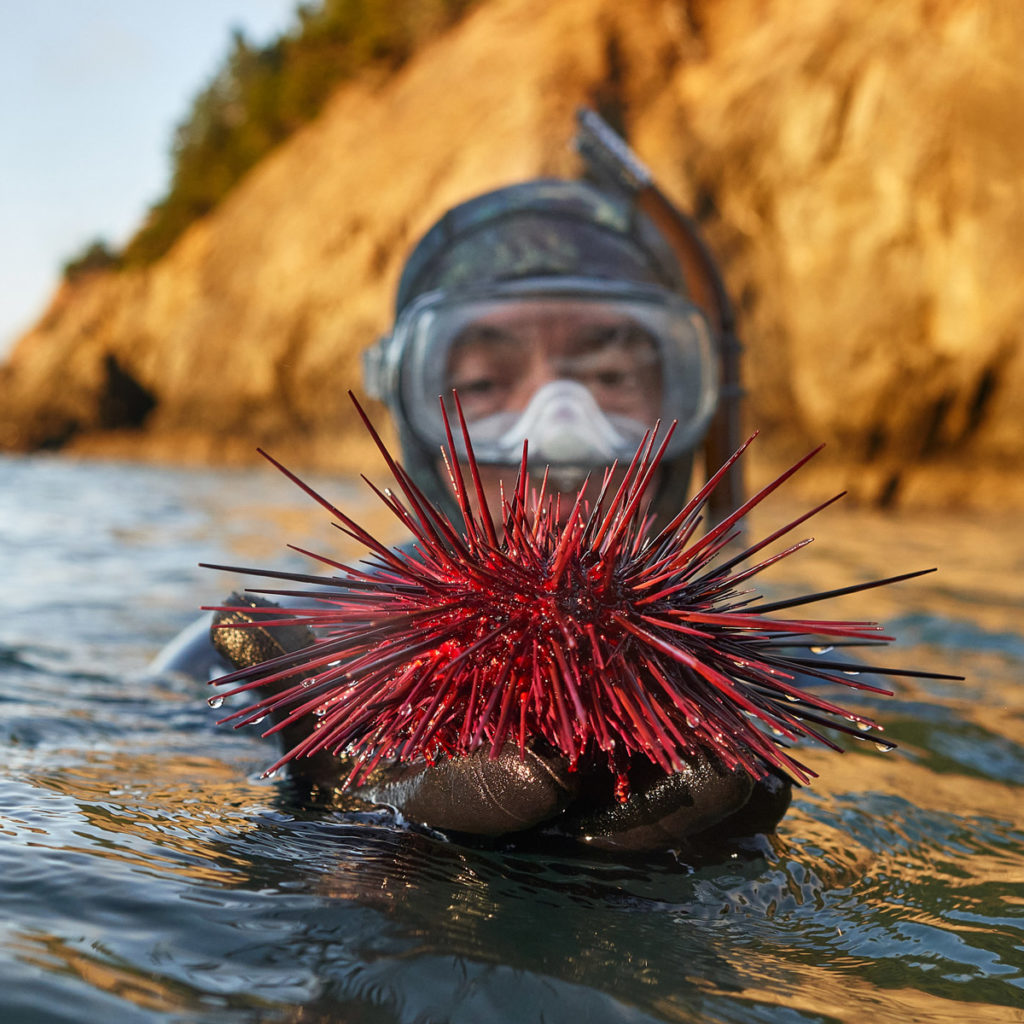
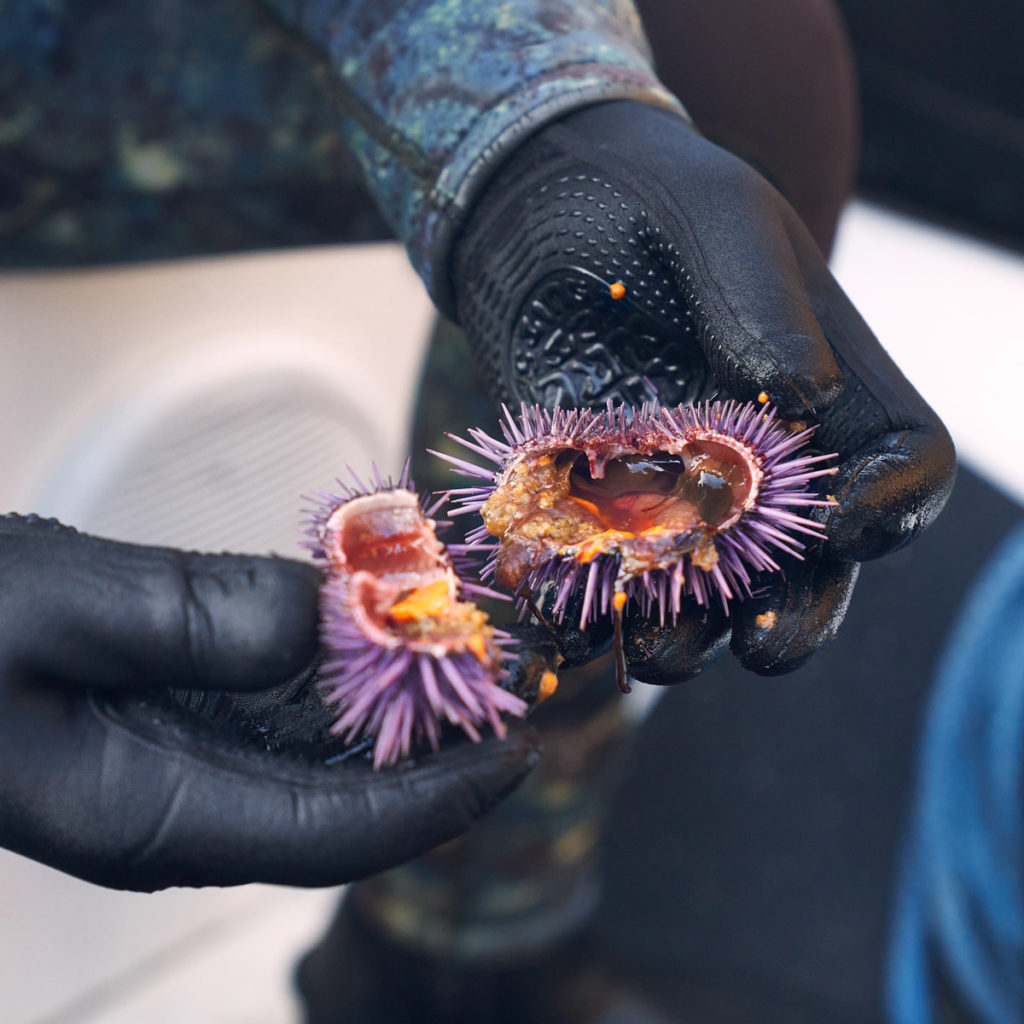
Sea star wasting disease killed billions of sea stars all over the world and effectively destroyed Oregon’s population of sunflower stars – an important predator that eats urchins. In 2020, with help from ORKA members Dr. Sara Hamilton and Dr. Sarah Gravem, the International Union for Conservation of Nature (IUCN) officially placed the sunflower sea star (Pycnopodia helianthoides) on their Red List of Threatened Species after recording a 90% decline in the species’ global population. This means that the sunflower sea star is now critically endangered. The next step is extinction.
Sea Otters were hunted to near extinction along the coasts of Oregon and Washington over 100 years ago. The Elakha Alliance is a non-profit working to reintroduce sea otters into Oregon’s coastal waters to restore and protect the kelp forest ecosystem. Bringing back an entire (once native) species into an ecosystem is complex and long-term work. The Elakha Alliance is working on a multi-step initiative to eventually reintroduce sea otters. These initiatives may take upwards of several years to complete, but they’re hopeful.
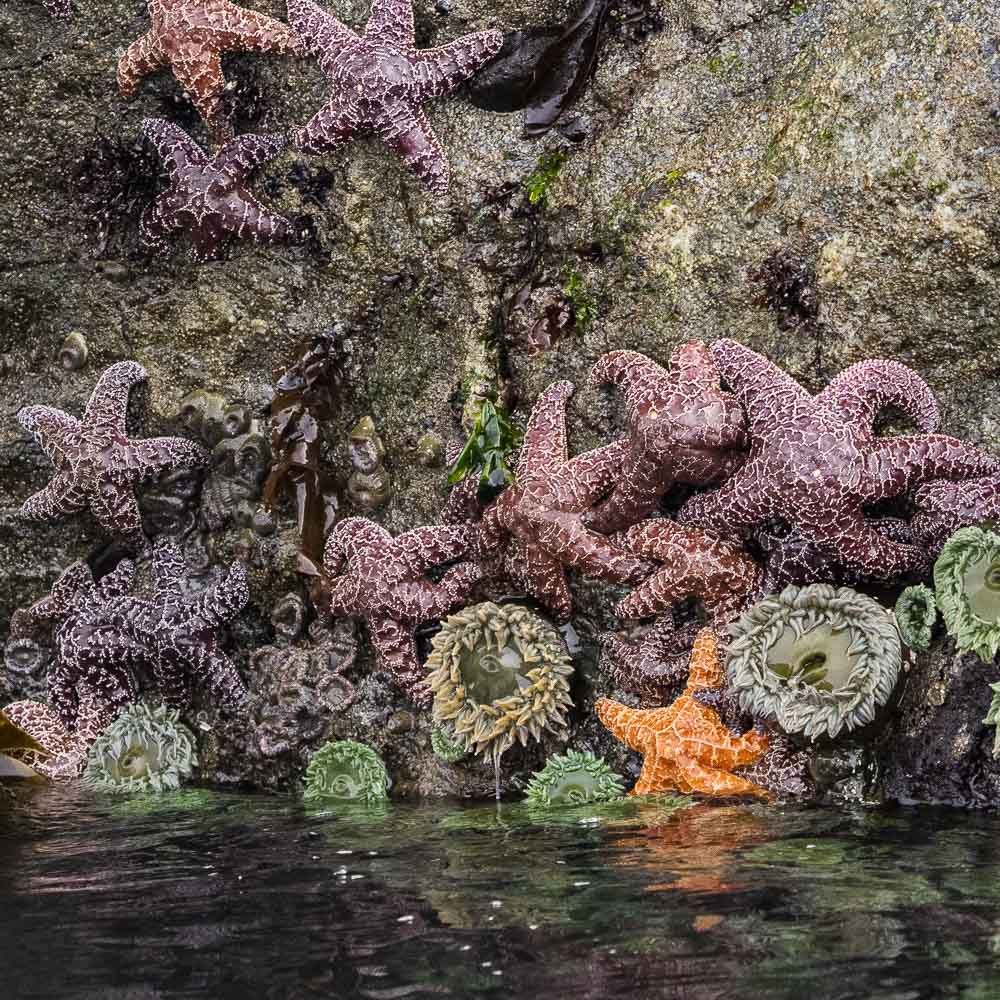
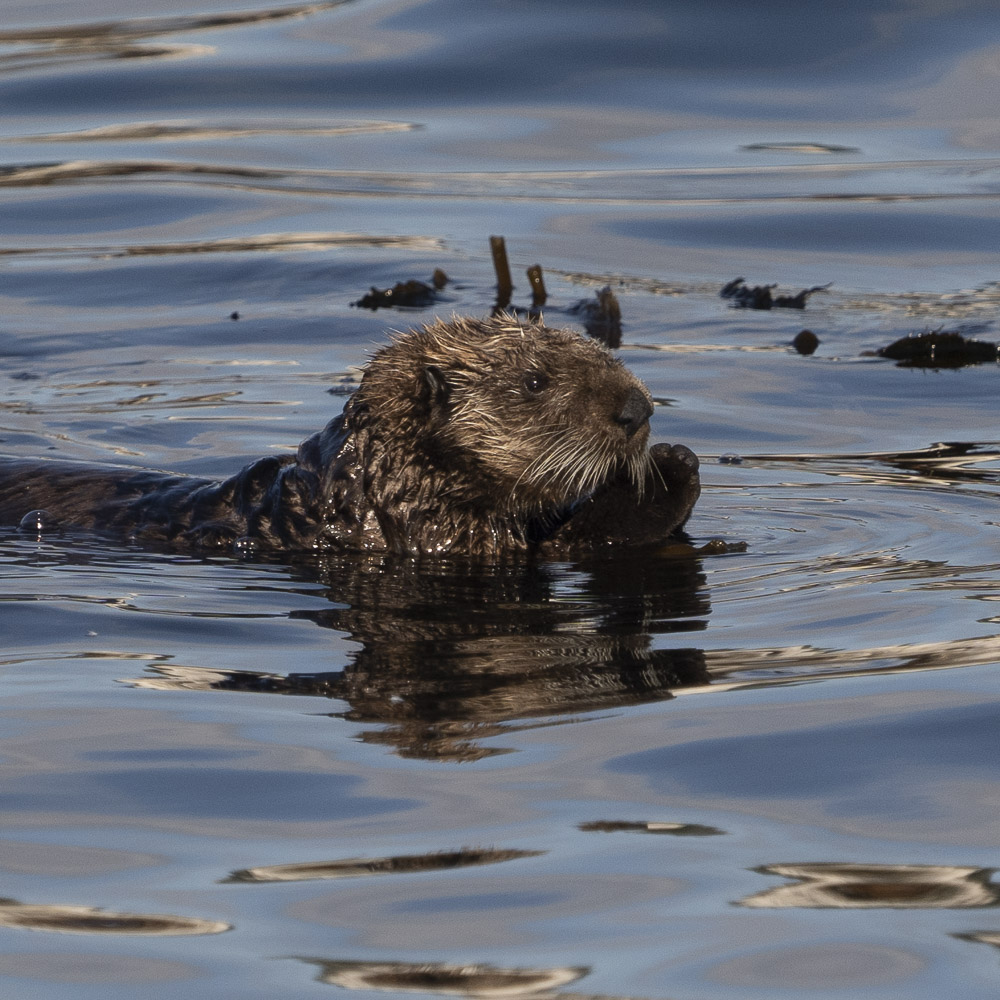
Sea Star Wasting Disease and the extinction of sea otters in Oregon removed critical environmental controls for urchin populations. Without predators to curb urchins, which can produce a million babies every year, populations have boomed and overrun kelp forests near Port Orford and elsewhere along the Oregon coast.
When urchins devour kelp forests and food supplies dry up, they enter a state of torpor – a low metabolic state which allows them to survive long periods without eating. In this torpor state, urchins become emaciated and nearly hollow. The emaciated urchins are often referred to as zombies and they eliminate opportunities for kelp forests to recover.
“Urchin are voracious. They’ll go a long time without eating anything. I’ve had them in the lab where we were trying to make them starve because we were trying to restart their physiology to test an algae. They’ll just start eating the side of their tank. I’ve pulled open urchins that have chunks of plexiglass inside of their bodies because they’ll just eat whatever is around. They also can live for at least several months without much or any food.”
Dr. Sarah Gravem
Ph.D., Marine Community Ecologist, Oregon State University Research Associate, Partnership for Interdisciplinary Studies of Coastal Oceans (PISCO) Program. ORKA member.
A purple urchin feasts on a crab in Tichenor Cove. (Video: N De Garmo)
The Oregon Kelp Alliance has launched a kelp forest restoration project targeting five sites identified by local divers. The sites range from Cape Lookout on the north coast, to Macklyn Cove in Brookings on the south coast. The experiment involves surveys to determine the extent of kelp loss and urchin population increases. Sea urchins will be removed from the sites where they’ve overgrazed on kelp so that kelp forests can begin to recover. A proposal to support the continuation of this project for another two years has been submitted to Oregon Sea Grant and is currently in review.
In recent weeks, ORKA completed two kelp forest restoration events at Nellies Cove in Port Orford – the first site where kelp forest restoration has begun. Over 30 scuba divers and freedivers contributed to these restoration events. Baseline surveys conducted by Reef Check Oregon have demonstrated that this area, once a healthy kelp forest, has been turned into an urchin barren, devoid of kelp. The experiment involves the removal of purple urchins from targeted areas. Continually monitoring and removing urchins from the five restoration sites opens a window of opportunity for kelp forests to establish and recover.
“I look at these things we’re doing here in Oregon, or in Haida Gwaii, in British Columbia, where we remove urchins as a grand experiment to then understand mechanistically what role they actually play. We can’t really learn that unless we push the system and move stuff around.”
– Dr. Aaron Galloway, Ph.D., Associate Professor, University of Oregon, Oregon Institute of Marine Biology
KELP FOREST RESTORATION INVOLVES REMOVING PURPLE URCHINS
Bull kelp is an annual species with a two-stage life cycle. You may recognize fully grown kelps from their gnarly holdfast, long stipes, gas-filled bulbs, and flowing fronds. At this stage in their life cycle, they’re known as sporophytes – the adult plant. But before becoming the trees of the ocean, tiny spores produced by adult kelps settle and grow into gametophytes on the ocean floor. Gametophytes develop into baby sporophytes which can quickly grow and mature in Oregon’s cold nutrient-rich waters. ORKA’s kelp restoration plan removes urchins from targeted areas and creates environments for kelps to develop. This also provides scientists with an opportunity to monitor progress throughout the restoration process.
Urchin barrens like this one in California are becoming increasingly common on Oregon's southern coast. (Photo: Laura Tesler)
Research dives are already in progress to more accurately monitor and count the number of urchins near Port Orford and at the other four experimental kelp forest restoration sites. Baseline surveys are essential for determining where urchin populations have become problematic and where they are part of natural fluctuations. Where surveys indicate the need for urchin culling to promote kelp restoration, ongoing monitoring will be needed. ORKA is joining others around the world experimenting with kelp forest restoration. Time will tell which of these efforts is most likely to succeed. What is clear is that kelp spores must be present to begin the restoration process. And urchin barrens are one of the things standing in the way.
“We partnered with the Oregon Department of Fish and Wildlife Shellfish Program Biologists to obtain a scientific take permit to begin experimental kelp forest restoration at five sites identified by local divers. The project begins with baseline surveys to determine the location and extent of urchin barrens and loss of kelp forests. Baseline surveys in October 2020 showed a lack of kelp and high density of purple urchins at Nellies Cove. We’re excited to report that more than 30 ORKA volunteer divers recently completed two weekends of kelp forest restoration work at Nellies Cove. We will continue the process of surveys, and where indicated, urchin culling at the other four experimental kelp forest restoration sites at Cape Lookout, Haystack Rock in Pacific City, South Cove at Cape Arago, and Macklyn Cove in Brookings”
–Tom Calvanese, Station manager for the Port Orford Field Station for Oregon State University. Coordinator of the Oregon Kelp Alliance
URCHIN RANCHING IS GAINING TRACTION
Urchin ranching is the process of fattening up emaciated urchins to develop healthy and usable uni for seafood markets. Urchins are removed from the ocean and placed in tanks where they’re fed a diet of cultivated seaweed until their uni is large enough to eat.
Emaciated urchins are covered in spines on the outside but nearly hollow on the inside. Without a regular food supply, the urchin’s sex organs, or uni, withers away while the urchin continues to live. Barrens of emaciated urchins prevent kelp forests from establishing, which forces marine life that relies on kelp forest habitat to move elsewhere.
An emaciated urchin pulled from Nellies Cove in Port Orford.
Ranching operations have gained traction in recent years. Urchinomics has a global footprint and is working to restore kelp forests around the world. Much of their work is based on urchin ranching. Oregon Dulse will soon begin a new ranching operation in Bandon, Oregon.
Oregon Sea Farms – operated by Mach I industries – is Oregon’s only commercial urchin diving company. They’re operating a small urchin ranching pilot at the Port of Port Orford with support from the Oregon Wildlife Foundation. Early results are promising and are anticipated to grow alongside kelp forest restoration efforts. ORKA is currently seeking funding to expand on this pilot operation in partnership with Oregon Sea Farms.
HEALTHY URCHINS PRODUCE UNI, A CULINARY DELICACY THROUGHOUT THE WORLD
The international uni market has historically favored larger red urchins. ORKA and Oregon Sea Farms believe there’s room to bring purple urchin uni to global seafood markets. Pioneer urchin diver and Oregon Sea Farms owner Tim Foley has already started introducing purple sea urchins to local uni markets. If customers continue to adopt the more delicate purple urchin uni, urchins may become a larger part of Oregon’s sustainable seafood industry. Chefs at Port Orford’s own Redfish restaurant and The Nest Cafe are also working to incorporate uni into their menus and are developing dishes that honor the area’s conservation efforts.
“I am concerned about these issues. Acidification and rising ocean temperatures impact my career and my ability to source sustainable foods. And I’m an avid outdoorsman. I love hunting and fishing. Kelp is connected to a lot of the foods and activities I enjoy. I want to be part of a solution.”
Paul Grossi
Chef at Redfish Restaurant
Redfish sits elegantly on a hill overlooking some of the most beautiful and dramatic coastlines in the country.
From the restaurant’s outdoor seating areas, guests take in views of aquamarine water and the Redfish Rocks Marine Reserve and Protected Area. To the south, Humbug Mountain and State Park jut out into the Pacific Ocean, guarding the town of Gold Beach, where the Rogue River meets the ocean.
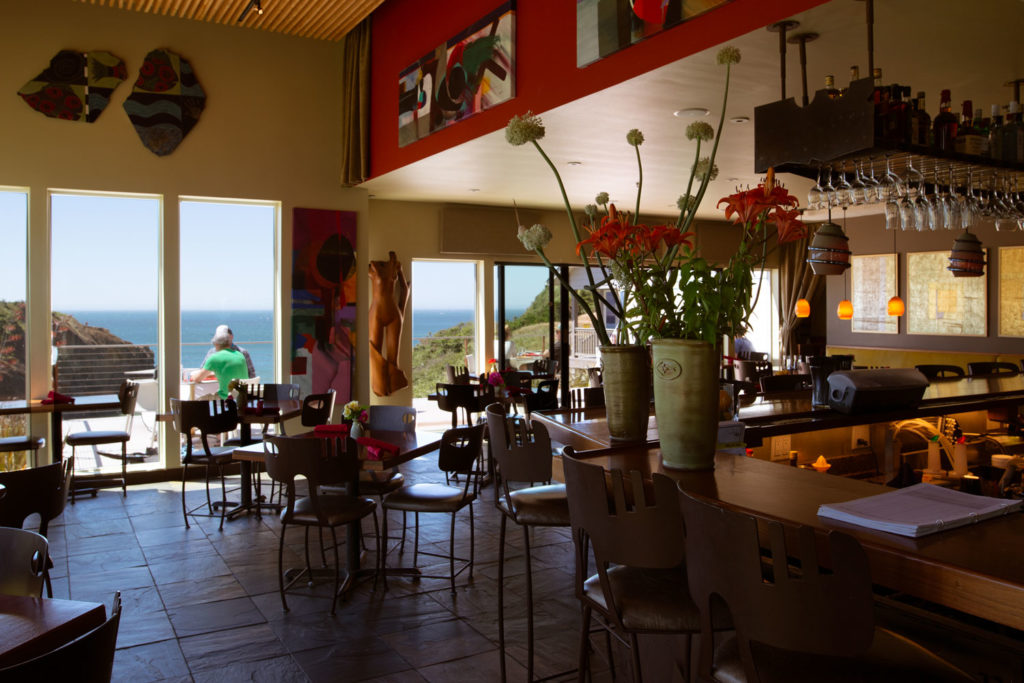
Executive Chef and Port Orford local Paul Grossi is tall with a growly voice and a pleasantly disarming candor. He wears torn jeans and a crisp black chef’s jacket while he crafts plates inspired by cuisines from around the planet. Chef Paul’s menu is constantly evolving and reflects the culinary and ecological diversity of the Oregon coast.
Grant Hogan owns MTN Sea Fitness in Port Orford and is a three-time national record-holding freediver. Grant’s deepest record-holding dive is 232 feet – a record that was only recently broken. Now retired from freediving, Grant spends his free time spearfishing along the southern Oregon coast. He’s witnessed firsthand the decline of kelp in the area and the urchin explosion. He’s also an advocate for eating more local urchins and the health benefits of fresh uni.
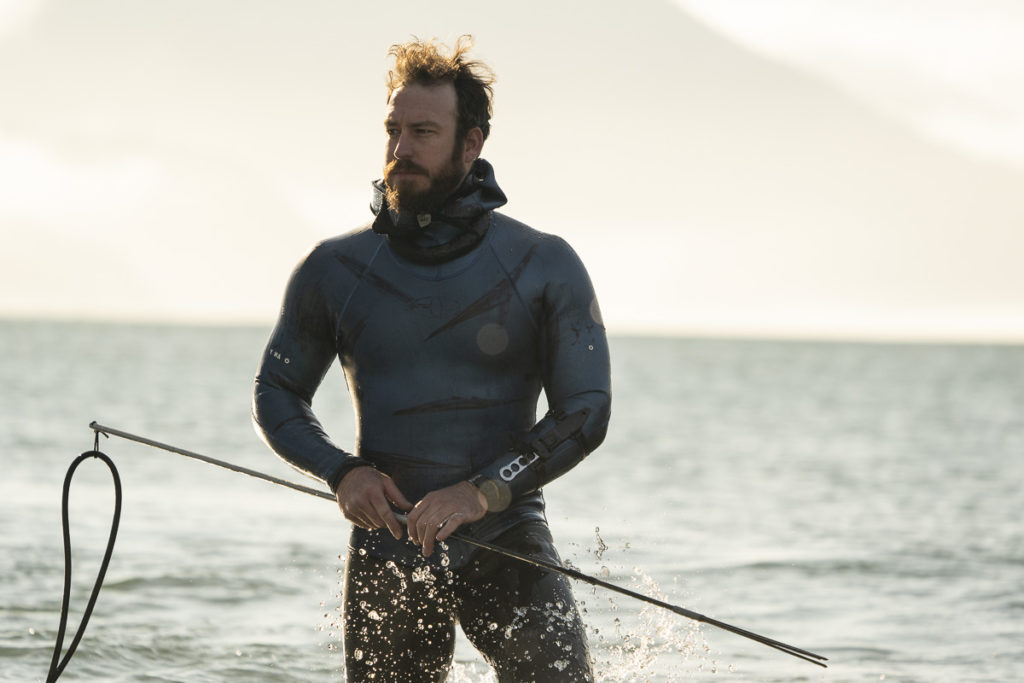
“Uni is basically a superfood. Generally, people don’t eat it because if you order it at a sushi restaurant it’s going to cost $9. But it can be just a snack. It’s a whole bunch of protein and good fat.”
– Grant Hogan, Owner of MTN Sea Fitness, three time national record holding freediver
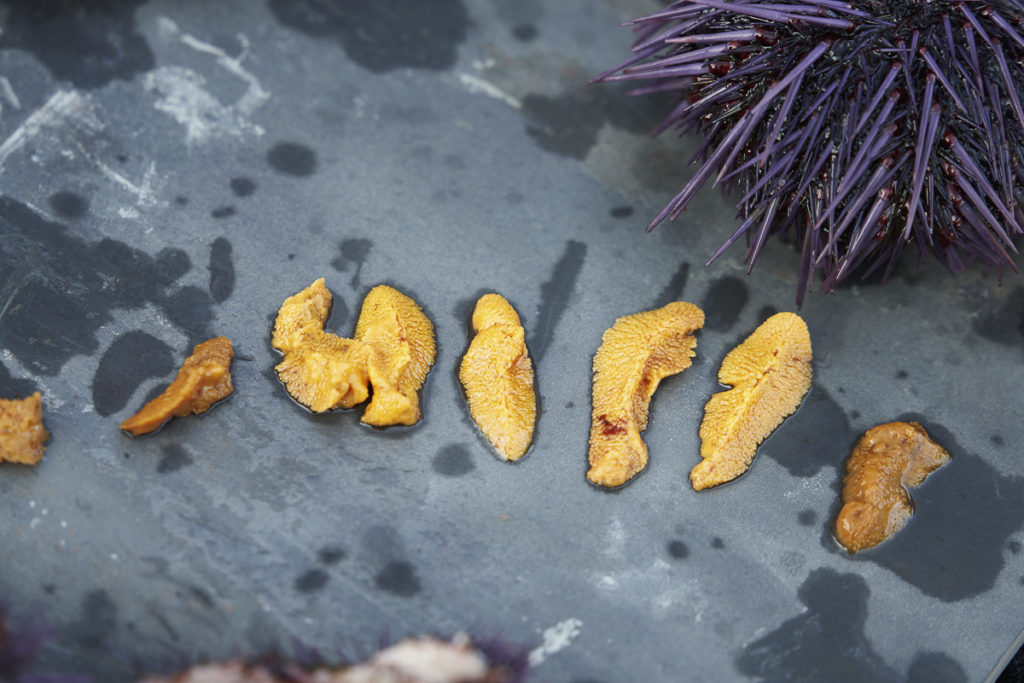
The Impact on Coastal Whales and Other NearShore Species
The impacts of healthy kelp forests stretch beyond what happens below the surface of the water. Whale watching brings tourists from across the country to the Oregon coast. Spotting a gray whale close to shore feeding in and around a kelp forest makes Oregon whale watching intimate and unique. If kelp forests aren’t thriving and creating habitat for the invertebrates that whales eat, opportunities for close encounters with gray whales will likely suffer.
“Oregon gray whales rely on reef and kelp habitats for feeding opportunities as these areas aggregate zooplankton prey. We are very concerned that diminishing kelp abundance could negatively impact gray whale foraging success, which would affect their health and occurrence patterns along our coast.”
Dr. Leigh Torres
GEMM Lab, OSU, Sea Grant
As disheartening as a decline in whale sightings would be for both tourists and marine mammal enthusiasts alike, there are also working-class Oregonians who rely on the presence of whales for their incomes. Whale watch charters and their employees would be the most impacted, but the effects will likely ripple through coastal restaurants, hotels, museums, gift shops, and more.
“People flock to the coast to catch glimpses of whales. There are places along the shore where you can perch yourself on a rock and watch gray whales foraging for food just a few feet away in those healthy kelp forests. It’s not hard to imagine that if these kelp-driven buffets go away, we’re going to see fewer whales stopping by our coastline. As sad as that will be for those of us who adore the whales, it’s going to be even more devastating for whale watching charters and other businesses that rely on those tourism dollars.”
–Erik Urdahl, The Spout, Redfish Rocks Community Team
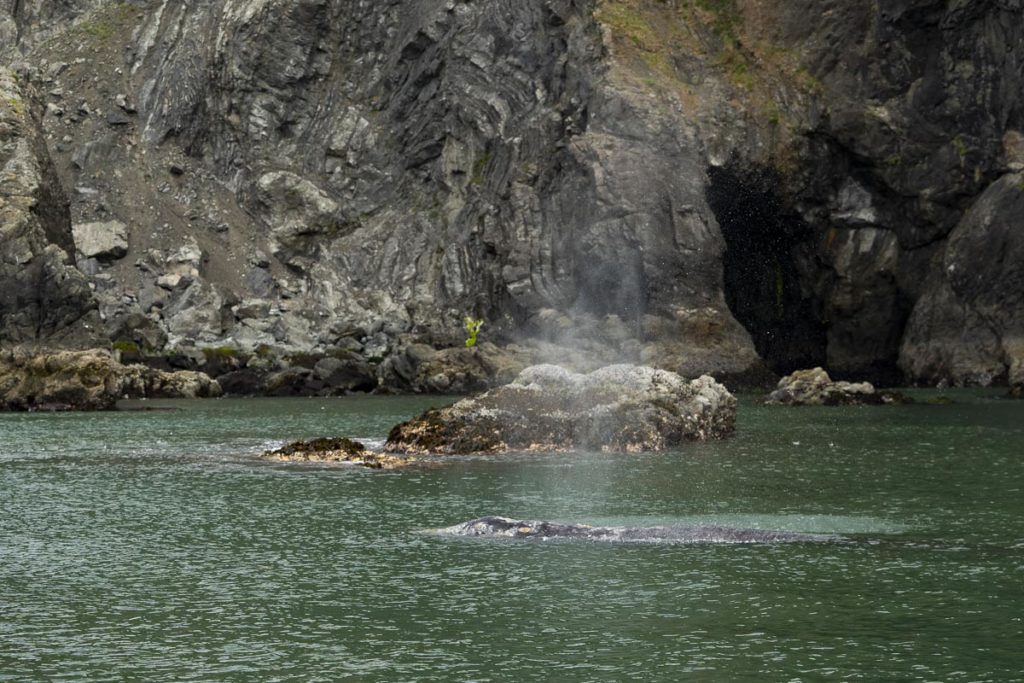
FISH NEED HEALTHY KELP FORESTS
Commercial fishing in Oregon relies heavily on rockfish and other groundfish like lingcod, cabezon, and greenling. Kelp forests are important habitats for these species and other rockfish and groundfish along the Oregon coast. Many depend on healthy kelp forests as juveniles early in life, when they are seeking a place to settle into their adult habitat. Kelp forests provide food, refuge, and natural camouflage for juvenile fish. As adults, many will take up residence within the dense underwater kelp forest. If kelp forests continue to decline, rockfish and other species – staples of commercial and recreational fishing – will be forced to seek suitable habitats elsewhere. In the case of juvenile fish, they may not even survive to adulthood.
Fishing has become increasingly difficult in the now nearly kelp free coves in Port Orford.
“In Nellies Cove and the area of Orford Heads, there’s very poor fishing now. There are lots of recreational fishers that go out and fish there. Probably just two years ago it was really booming. Lately, there have been a lot of people going out there but they haven’t been catching much. This year we hardly see anyone fishing there anymore. A few of the diehards are still trying, but most of the people who have been doing it for years now realize that there’s nothing there anymore. We still do kayak fishing tours in the area, but it’s pretty slow even for us. We’re lucky to get two or three keeper fish, and we used to limit out.”
Capt. Dave Lacey
Owner South Coast Tours, Destination Coordinator for the Oregon Coast Visitors Association
Wild fish in the Pacific Northwest currently have a very bright and important conservation spotlight shining on them. Kelp forests provide habitat for salmon before they return to rivers to spawn. Human pressures are mounting against salmon and are directly linked to the health of Puget Sound Orca populations. Declining bull kelp forests in the Pacific Northwest are another threat to salmon, and in turn, a threat to Orcas.
Many of the opportunities to experience coastal wildlife close to shore exist because kelp forests provide habitat for fish and other invertebrates that bring larger marine mammals, like whales and seals. Kelp forests are essential to ocean recreation, our coastal economies, and the natural beauty of Oregon and Washington.
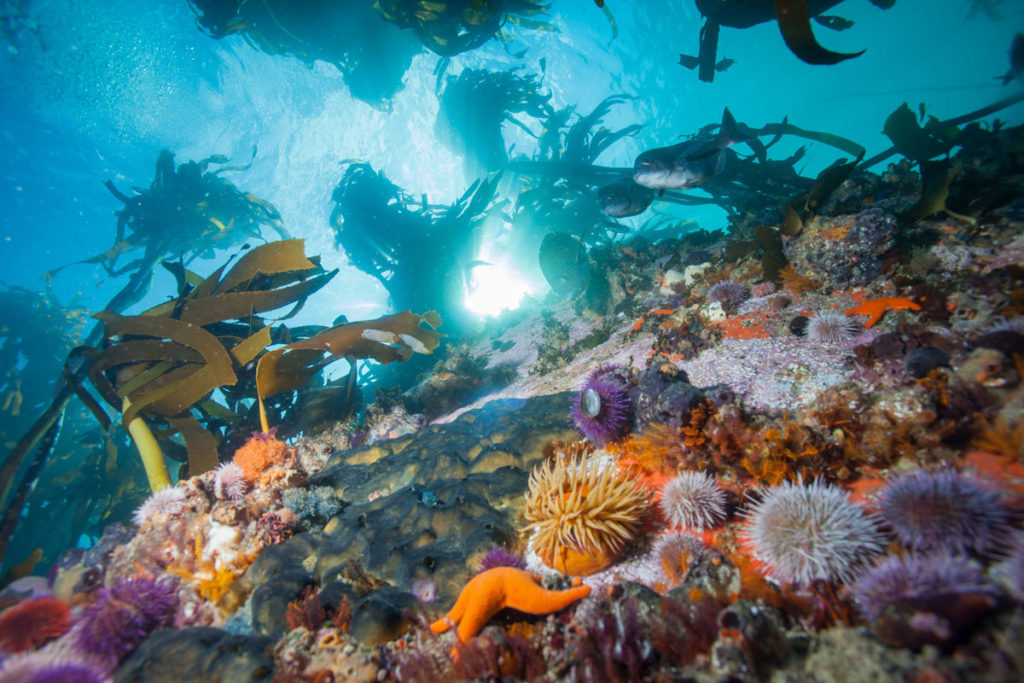
YOUR OPPORTUNITY TO PARTICIPATE IN IMPORTANT SCIENCE
ORKA’s plan to remove urchins, ranch them, and put them on your dinner plate to start restoring kelp is unique because it offers you an opportunity to participate in restoration science. Climate change is partially responsible for declining ocean health, and those problems are massive. Kelp sequesters carbon which makes it a powerful tool for scientists who are trying to change the course of our environmental future. You may not be able to stop the planet from warming, but you can help kelp forests.
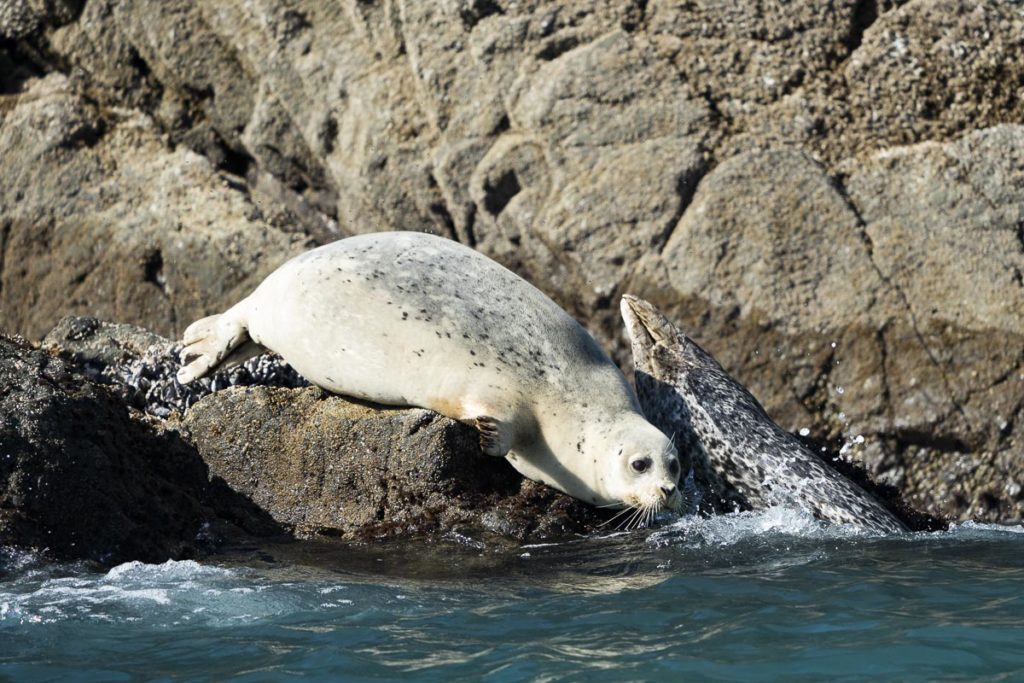
So many conservation calls to action are to do less – reduce the use of fossil fuels, use less plastic, harvest fewer wild fish. And while these goals are important and should be strived for, ORKA’s plan asks you to do more, not less. Make learning about Oregon’s kelp forests part of your visit to the coast. Recreate in Port Orford. Look for opportunities to eat more uni from the area. Have seconds and thirds. You can support science by participating in Port Orford’s recreation and local cuisine. Scientists like Tom Calvanese, Aaron Galloway, Sarah Gravem, Sara Hamilton, and many more, are working to understand what we can do to support kelp. The Oregon Kelp Alliance needs your support to find answers.
Travel to the southern Oregon coast and book a kayak or snorkel tour with South Coast Tours. Captain Dave Lacey and his crew make kelp and urchin education a regular part of tours. If you’re a trained scuba diver, contact ORKA about how you can participate in a kelp restoration project where you dive.
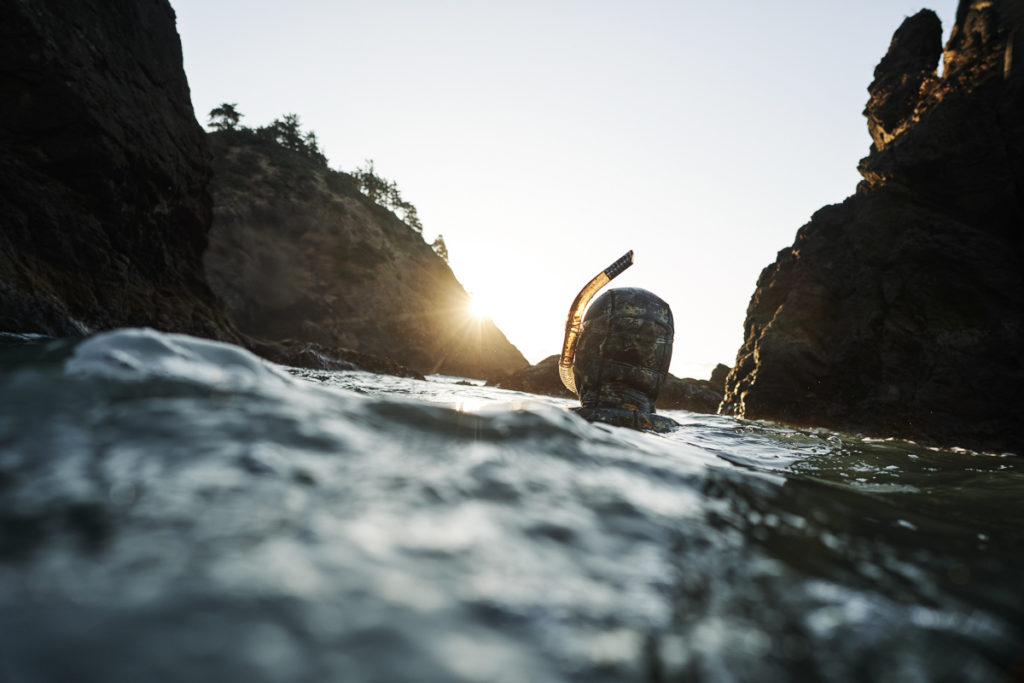
Eat at the Nest Cafe or order from Redfish – experience the Oregon coast’s ecological story on a delicious plate filled with fresh uni.
Seek out sources of sustainable seafood. Tell your friends and family when you find a place that can tell you where your fish comes from and who caught it. Knowing where your seafood comes from is just one way you can support ORKA and other groups that are working to promote healthy kelp forests.
You can support ORKA and kelp forests from your hometown and every time you travel to the Oregon coast. Simply understanding the importance of kelp forests and recognizing the efforts to support them changes the way we experience our coastal communities.
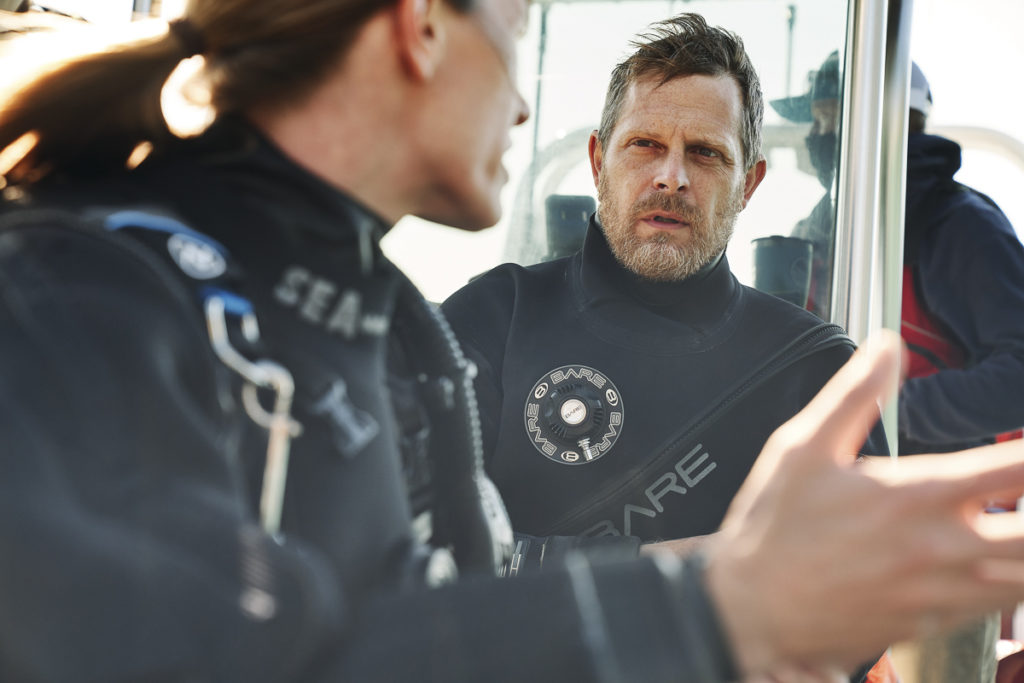
“People want to do something. They’re sick of the gloom and doom about climate change, with no offer of any kind of a solution. Is that the solution to Climate Change? No, of course not. But people need hope too.”
–Tom Calvanese, Station manager for the Port Orford Field Station for Oregon State University. Coordinator of the Oregon Kelp Alliance
ORKA's work with Oregon Kelp Forests and Coastal Communities is just Beginning
In addition to creating targeted kelp restoration areas, ORKA’s members are also spearheading efforts to begin consistently monitoring Oregon’s kelp forest ecosystems. Dr. Aaron Galloway, Associate Professor at the University of Oregon’s Institute of Marine Biology, estimates that for every 100 scientific dives in California, there are just two in Oregon. That’s not enough to find the answers we need to help the kelp. Research dives, like the urchin monitoring dives being conducted in Port Orford, require funding and resources. Until recently, Oregon hasn’t had the money or the appetite to organize monitoring efforts. Members of ORKA are working to change that.
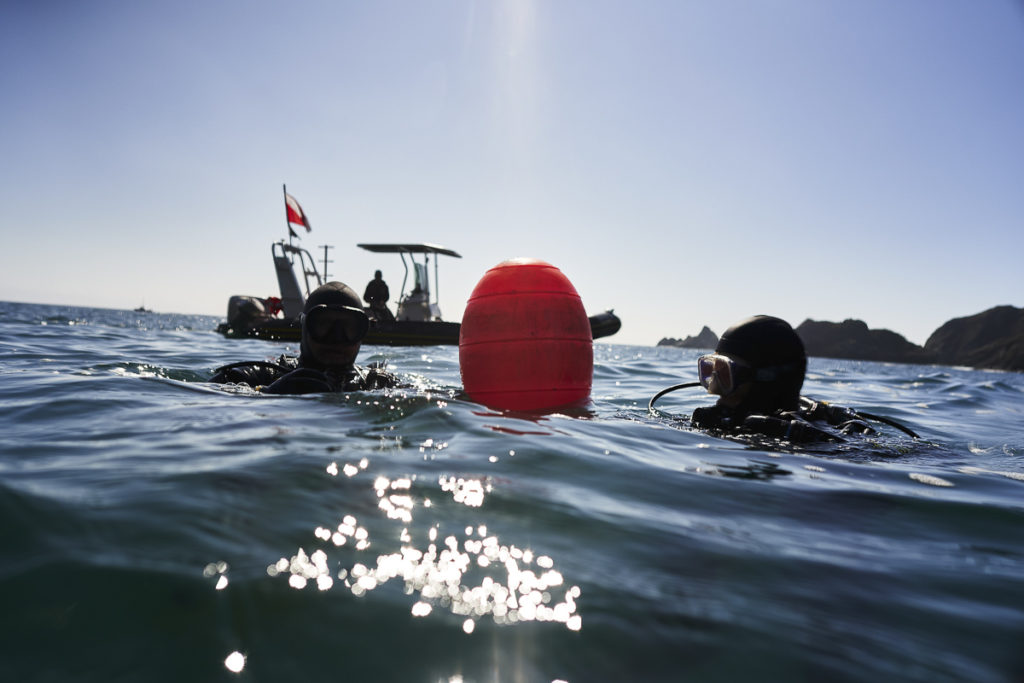
Dr. Leigh Torres and Dr. Galloway recently secured a SEED grant from Oregon Sea Grant to both study and monitor the state of Oregon’s kelp forests, and explore how kelp supports gray whales. Nicknamed ‘Kelp to Whales,’ Dr. Galloway’s work on the joint project will primarily take place underwater through dive surveys, while Dr. Torres focuses on whale research. The collapse of California’s kelp forests raises big concerns about the resiliency of Oregon’s coastal ecosystems and connected communities. Our understanding of Oregon’s kelp forests is limited, partially due to a lack of consistent monitoring.
Dr. Aaron Galloway
Ph.D., Associate Professor, University of Oregon, Oregon Institute of Marine Biology
ORKA’s kelp forest restoration and urchin ranching efforts have attracted the attention of Oregon’s U.S. Senator Jeff Merkley. Recently, ORKA submitted a summary policy proposal that outlines strategies and goals for kelp forest restoration. This and similar proposals will contribute to a multi-state initiative led by U.S. Senators and Representatives from Oregon, Washington, California, and Alaska.
Meanwhile, the Oregon Kelp Alliance is working with Senator Merkley’s office to secure resources to support aerial and underwater surveys of Oregon’s kelp forests. These surveys will provide critical information to help plan the future of kelp restoration.
Removing and farming urchins is just one component of ORKA’s complex kelp restoration proposal. The early stages of ORKA’s restoration process are already underway and will help outline best practices for turning urchin barrens back into healthy kelp forests. Surveys, like those supported by Senator Merkley, will help identify areas that could benefit from kelp restoration.
The Oregon Kelp Alliance brings together divers, scientists, tribal members, drone pilots, guides, and chefs to protect and maintain kelp forests. As kelp restoration advances along the Oregon coast, ORKA will continue to work with local, regional, and global partners to develop networks that support healthy kelp forests in Oregon and around the planet.
While ORKA is working to rally federal and state support for kelp forests, you have an opportunity to help. Get outside, experience the beauty of Oregon’s coast, eat sustainably sourced seafood, and see this massive problem with your own eyes.
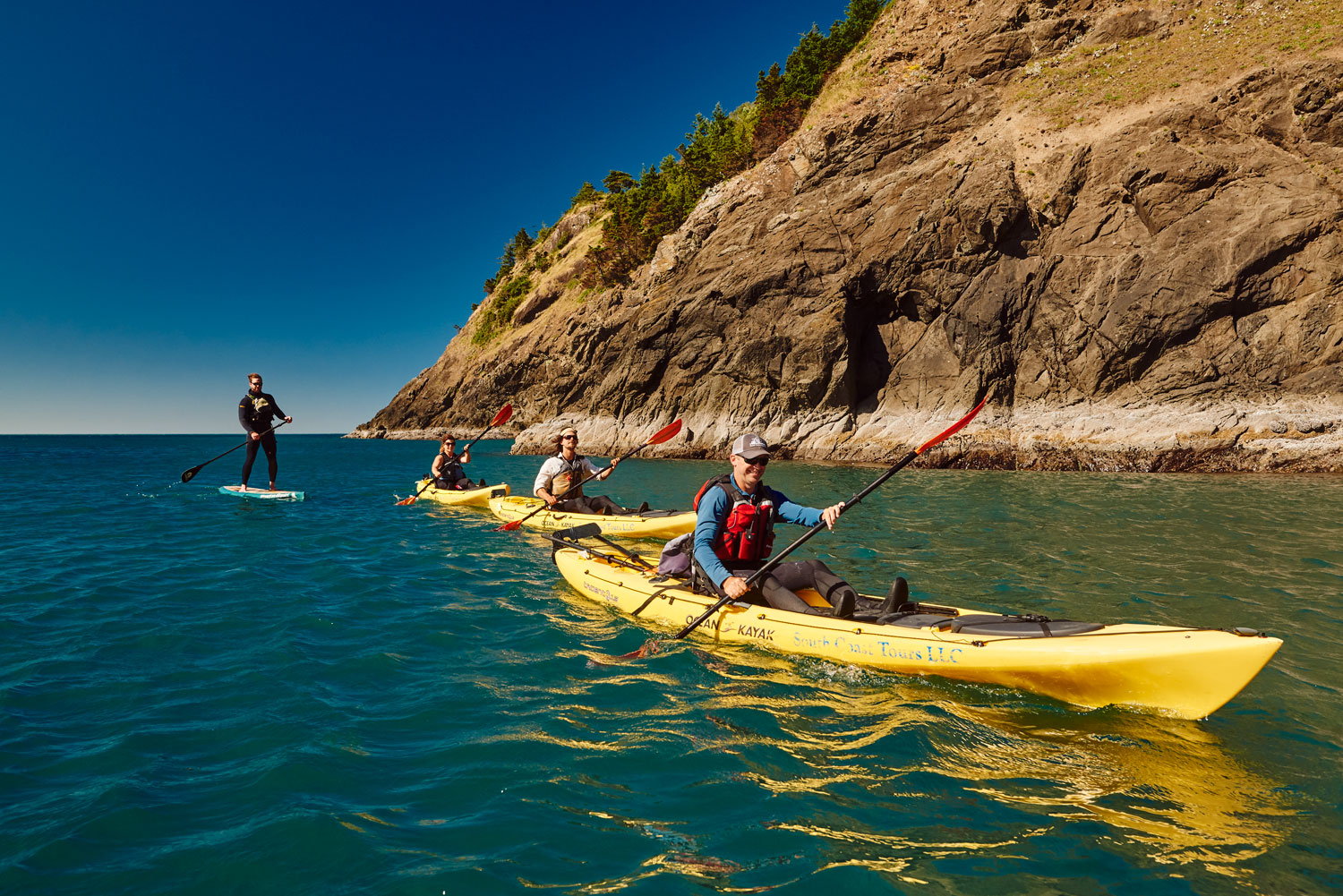
The scale of declining kelp and booming purple urchin populations is massive. And while ORKA’s scientists agree that we’re not going to eat our way out of the problem, we can, and should, take a few bites.
How you can help
The targeted kelp restoration plan that’s being developed by the Oregon Kelp Alliance will require funding and long-term support from governments and various agencies. But public interest and support are equally important as funding. These are the ways you can support the Oregon Kelp Alliance today:
Plan a trip to Port Orford and the southern Oregon coast. Get out on the water and see urchins up close. Be sure to check local regulations before attempting to harvest urchins. (Covid permitting)
Support Pacific Northwest coastal economies from wherever you call home. Talk to your local environmental organizations. ORKA is a diverse network of scientists, citizens, and tribal members from environmental groups across the Northwest. Get to know the groups in your area that are actively participating in science.
You can also search for sustainable seafood sources. Find out where your seafood is coming from. Share those sources with your friends and neighbors when you find them. You have buying power that can directly influence the quality and ethics of the food you eat.
And, if you’re not hungry for sustainable seafood, you’ve met all of your local environmental groups, and you’re already connected to ORKA, get outside and connect with your home waters. The ocean covers two-thirds of our planet, produces half of the oxygen we breathe, and provides an abundant source of healthy food for billions of people. Give it some love.
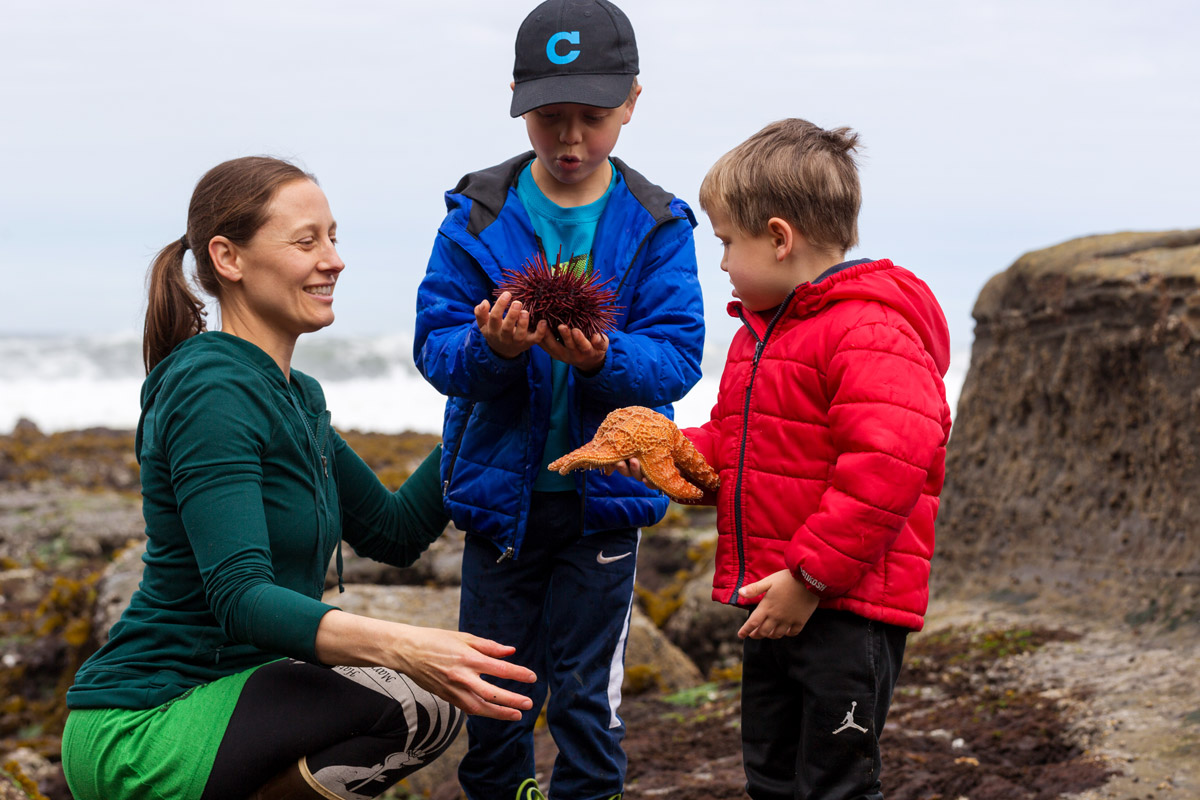
“Go have a kayak tour! Take the kids to the tidepools. People don’t care about what they don’t see.”
-Sarah Gravem, Ph.D., Marine Community Ecologist, Oregon State University Research Associate, Partnership for Interdisciplinary Studies of Coastal Oceans (PISCO) Program. ORKA member.
ORKA X Wild Human
Wild Human tells stories about people who do good things for their communities and the planet. We proudly partnered with the Oregon Kelp Alliance to create this story. We'll continue to support their good work and advocate for healthy kelp forests.
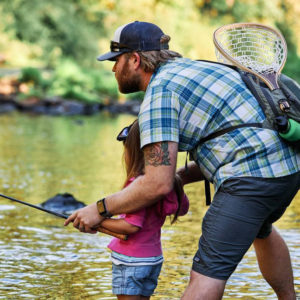
Tony Kastelnik
Producer, Head Writer
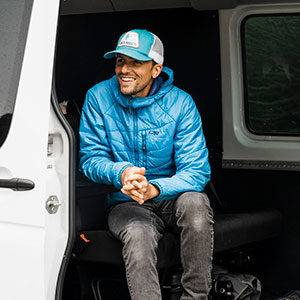
Justin Myers
Lead Photographer, Art Direction
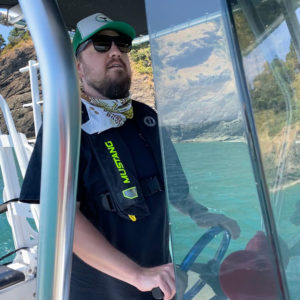
Erik Urdahl
Video Lead, Photography, Web Design & Build
This work wouldn't be possible without the contributions from ORKA's partnering organizations:
Oregon Sea Grant
Program Development
OR Coast Visitor's Association
Education and Outreach
OSU Port Orford Field Station
Field Support
Oregon Institue of Marine Biology
Kelp Forest Ecology Research
Oregon Wildlife Foundation
Oregon Sea Farms urchin ranching pilot
Elakha Alliance
Sea Otter Reintroduction
The Nature Conservancy
Kelp Survey Work
OR Dept Fish & Wildlife
Urchin monitoring and surveying
South Coast Tours
Dive and Media Support
Oregon DLDC
Policy and Restoration
Port of Port Orford
Field Support
PEW Charitable Trusts
Kelp forest restoration project
Oregon Sea Farms
Urchin Ranching
